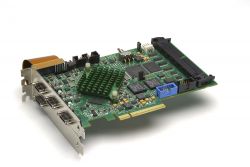OSU College of Engineering establishes institute for robotics, intelligent systems
Its called the CoRIS Institute, short for Collaborative Robotics and Intelligent Systems. Institute director Kagan Tumer said the new center would conduct research in robotics and artificial intelligence, as well as machine learning, vision, sensors, devices, and new materials. The institute also will explore public policy and ethical questions surrounding the deployment of robots and intelligent systems.
CORVALLIS, Ore. - Oregon State Universitys College of Engineering has established a new research institute to advance the theory, design, development and deployment of robots and intelligent systems able to interact seamlessly with people.
Institute director Kagan Tumer said the new center would conduct research in robotics and artificial intelligence, as well as machine learning, vision, sensors, devices, and new materials. The institute also will explore public policy and ethical questions surrounding the deployment of robots and intelligent systems.
Tumer said the institute would enhance and enable research in oceanography, forestry, agricultural science and other fields, as well as identify and facilitate possible partnerships with companies around the globe to bring algorithms, software, hardware and integrated systems into everyday use.
"The CoRIS Institute will cement Oregon States position as a national leader in robotics and artificial intelligence," said Scott Ashford, dean of the College of Engineering. "The institute is poised to become a venue for exploring not just the technological advancement of robotics, but also all of the other dimensions of the robotics revolution.
"It will investigate the promise and the risks of robotics in the real world today, tomorrow and well into the future and help us plot a course through uncharted territory."
The college offers a top-tier artificial intelligence program, as well as one of the five doctorate-granting robotics programs in the United States. Those two programs received more than 500 student applications for the 40 openings available in fall term 2016.
"Our robotics and artificial intelligence faculty have a strong reputation for conducting cutting-edge research, holding key leadership positions in international organizations and drawing the best students from Oregon, the nation and the world," said Tumer, a professor of mechanical engineering with a background that spans computer science and electrical engineering.
"Research at Oregon State focuses on robotics and intelligent systems as a whole, exploring both the interaction between technology and human beings and the impact that technology will have on society."
The institutes core faculty are 25 researchers in robotics and artificial intelligence. Collaborators include more than 40 other researchers from across OSU who are looking to apply robotics and artificial intelligence concepts to their own work.
"I can think of no better place than Oregon State for the home of the new CoRIS Institute," Ashford said. "Our visionary robotics program already is recognized as one of the nations best and most progressive, and OSUs deeply rooted culture of collaboration provides an ideal environment for this interdisciplinary institute to thrive and grow."
Tumer notes that the moment a robot exits a lab and enters the everyday world, the large, complicated issue of human-robot interaction is at play in full force.
"You have to look at the big picture," he said. "You have to think about how that robot is going to interact with people months down the road, years down the road. There are technical issues to putting robots in homes and also ethical issues. For example, what are the privacy issues of having a robot in your home 24-7? What is the emotional impact of interacting with that robot daily? Its fair to say our emphasis on societal impact is one of the unique aspects of our institute."
Early on in the field of robotics, Tumer said, a robot was typically a "big mechanical device on a factory floor, caged away, unpredictable and dangerous, not designed to be interacting with humans in a way that was natural to them."
"But in the future, a robot might be sitting with you, working with you with some level of interaction," he said. "Oregon State didnt have a robotics program 10 years ago, which is in some ways liberating because were not saddled with the legacy of what a robotics program ought to be. We have a lot of young faculty who are looking at where the field is going and are not in any way stuck with how things were perceived in the past. Theyre looking at how robotics ought to be rather than how robotics was."
Tumers leadership team includes three associate directors: Julie A. Adams, for deployment and policy; Alan Fern, for research; and Bill Smart, for academics. Adams and Fern are professors of computer science, and Smart is an associate professor of mechanical engineering.
Funding sources for research by the institutes core faculty include federal and state grants, industry grants, and philanthropic gifts.
The institute will be located within existing research space within the College of Engineering.
About the OSU College of Engineering: The OSU College of Engineering is among the nations largest and most productive engineering programs. Since 1999, the college has more than tripled its research expenditures to $37.2 million by emphasizing highly collaborative research and innovation that solve global problems. Its a leader in signature research areas, including precision health, clean energy, resilient infrastructure and advanced manufacturing; and targeted strategic areas, including robotics, materials research and clean water.
Featured Product

